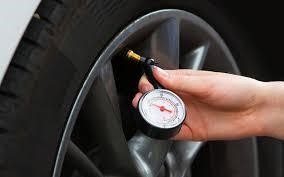The 5 Steps of a Risk Assessment
When you need to carry out a risk assessment in the workplace, the Health and Safety Executive provide guidance on 5 important steps to carry out:
- Identifying the hazards
Every employer has a duty of care to adequately assess any risks to health and safety that their work may face. An employer must regularly assess for mental, physical, biological and chemical hazards. This also includes areas outside such as car parks.
A hazard can be classified in the following categories as:
Mental – This could include strain from excess workload, providing prolonged high-need care, bullying or long shifts.
Physical – This might include having to maintain an awkward posture, trips, falls, excessive noise, dangerous machinery or lifting. Winter weather provides particular hazards when entering and exiting the workplace so consider Car Park Gritting Gloucester.
Biological – This includes exposure to infectious diseases like tuberculosis and hepatitis that are a risk for certain workers in the health and care sector for example.
Chemical – Exposure to aerosols, asbestos and cleaning chemicals.
- Examine those who are most at risk
As well as looking at the roles of your employees, the risks faced by contract and agency staff must also be addressed. The same can be said of assessing risks to visitors, customers, clients and members of the public who might be entering your business premises. This assessment must cover every location and site where staff are employed.
Some examples of potential hazards include home care workers and lifting arrangements in a client’s home or care home setting. A supermarket can have slip or trip hazards from spillages or stock left lying around. Staff could also experience aggressive behaviour from customers, especially during night shifts. In office environments, workstation equipment can cause repetitive injuries or vision problems.
Employers must assess those at even more risk, such as shiftworkers, night workers, pregnant women, young people and disabled workers.
- Take action
Consideration must be given to how likely these hazards could occur. This determines how much should be done to reduce those risks as far as possible. Some risk will likely always remain, but employers must decide whether it remains low, medium or high.
- Record the findings
Any employers with 5 or more employees must put down in writing the significant findings from the risk assessment. This needs to include all hazards identified and the action taken or proposed to reduce or eradicate that risk. This acts as proof that an assessment was carried out in line with regulations and can be used later to review practices.
- Review
A risk assessment is a working document that should be readily available to read and under constant review. It needs to be an ever-evolving document so that safe working methods are continually applied, and updates can be made when any changes in working practices, machinery or staffing levels occur.


















